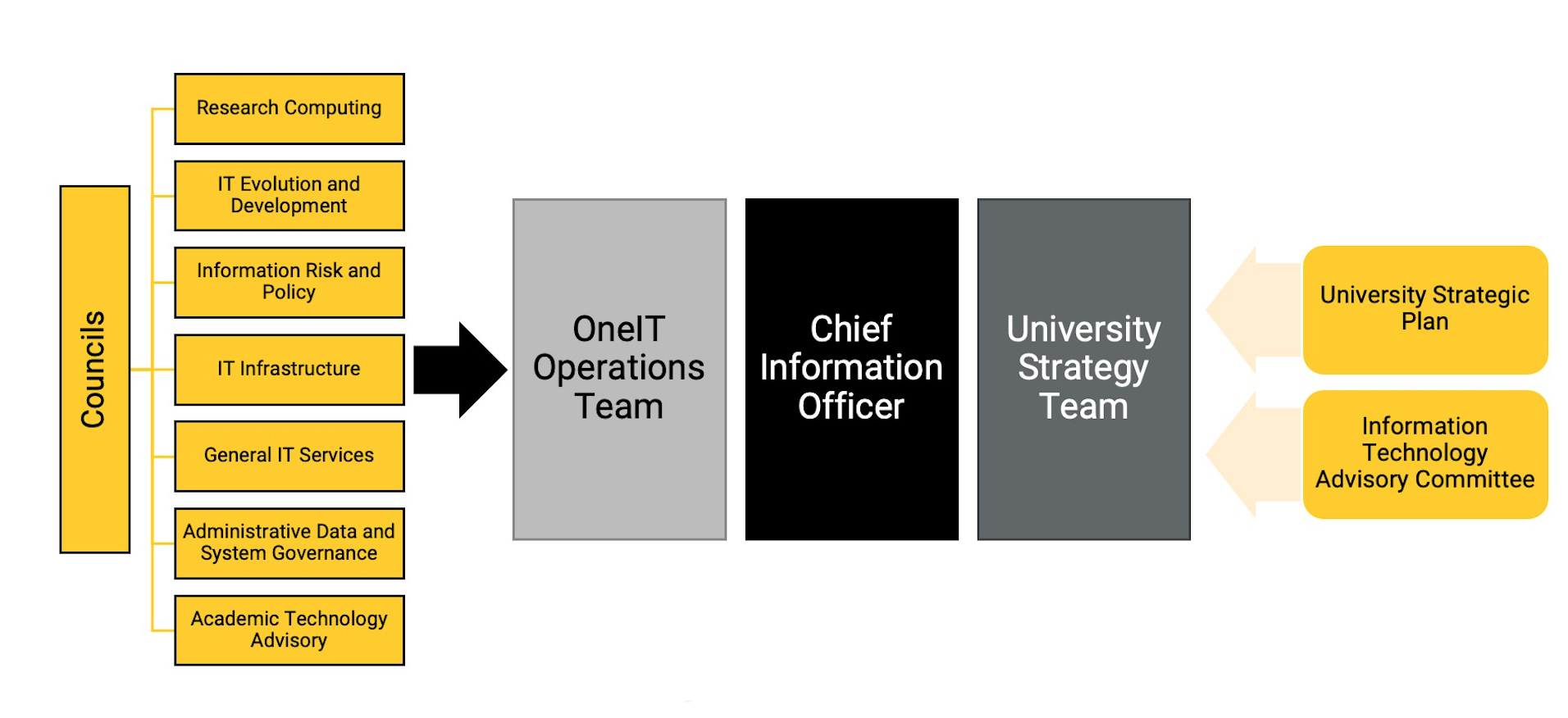Breadcrumb
- Home
- Governance
Governance Structures and Roles
Main navigation
Goals
OneIT governance aims to
- Improve communication and visibility of IT projects and services
- Provide clarity on IT decision-making
- Align investments of money and time with strategy
- Minimize risk
- Broaden input from the campus community regarding strategic direction and priorities
Structure and roles
There are several key groups with distinct roles in the OneIT governance process.

The Operations Team handles day-to-day coordination and change-management and ensures requests are managed by appropriate groups. Membership is primarily IT leaders.
- This group is charged with IT project and service communication and coordination, working within and through the IT governance process.
- Sub-teams will be formed to address specific issues or initiatives, and to manage operational issues that fall under the CIO’s purview.
Seven topic-specific advisory groups have expertise in a specific domain, raise and collect issues within that area of responsibility, analyze the issues, and make recommendations. They engage other IT governance groups, UI governance groups, and general campus stakeholders, as appropriate. Members are subject matter experts, and each council has a leader and a facilitator.
Councils
There are seven IT councils. Their role is to:
- Assist in setting the strategic agenda for domain-specific IT decisions
- Ensure that outcomes and priorities for each council are communicated back to the campus
- Lead domain-specific IT collaboration efforts across campus
- Ensure that appropriate stakeholders have opportunity for input and reaction
- Create and charge subcommittees or task forces as needed for deeper exploration/engagement
- Advocate for necessary domain-specific IT resource allocations
More information and membership of each council are available on their individual pages.